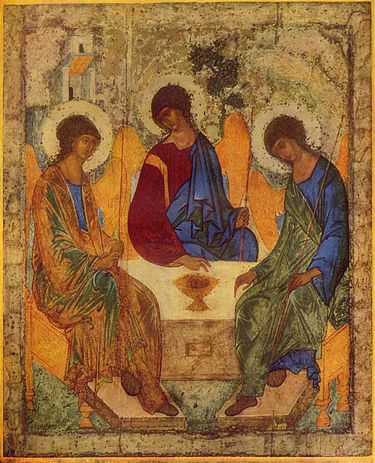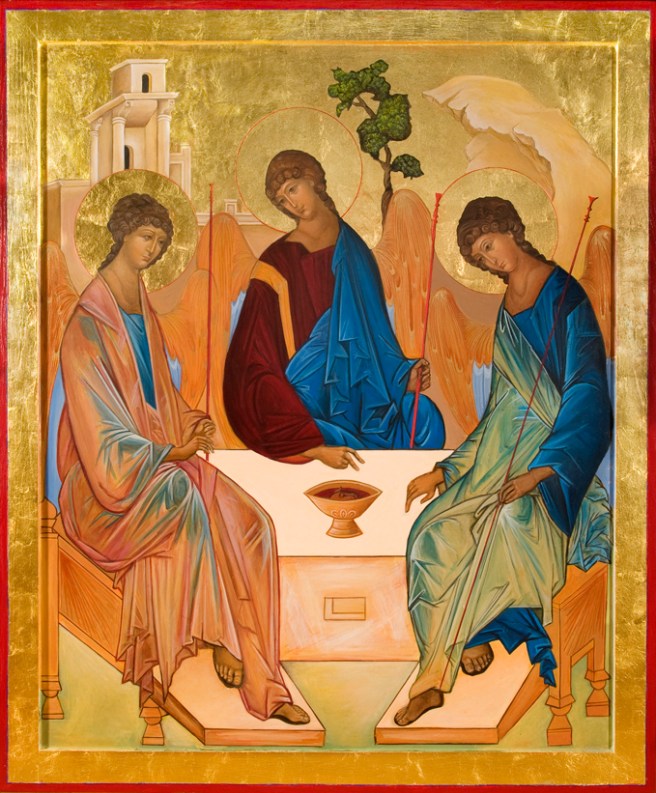Artistic images of the Blessed Mother of Jesus, as portrayed by different cultures within historical periods, have been part of world history for centuries. Below are a few examples of these images.









The various images of Jesus and His Mother portrayed by each ethnic group are beautiful and have spiritual meaning. Are the artists of these works prejudiced or racist?
Because of the controversy over comments made by political activists over the last few weeks it would appear that the motive of cultural artistic contributions is based on racial superiority. Their opinion points to the obvious truth that in our social and political climate confusion is very possible.
A debate is occurring within the fields of physical anthropology, genetics, and evolutionary biology concerning the issues of race and racial supremacy. Some scholars have concluded that racial supremacy and even the various categories of human races do not exist.
Evolutionary biologist, Alan R. Templeton’s recent genetic research contributes to the discussion. The abstract of his research is published in final form as: Stud Hist Philos Biol Biomed Sci. 2013 Sep; 44(3): 262–271.
Highlights of Templeton’s research:
- “Races are highly genetically differentiated populations with sharp geographical boundaries.
- Alternatively, races can be distinct evolutionary lineages within a species.
- By either definition, races do not exist in humans but do exist in chimpanzees. [italics mine, P.O.I]
- Adaptive traits such as skin color do not define races and are often discordant with one another.
- Human populations are interwoven by genetic interchanges; there is no tree of populations.”
Thus, in the grand scheme of things superficial traits are what separate us not genetic differences. Valid scientific evidence may be proving that the concept of five races is outmoded and not substantiated by modern genetic research. It is correct to say that specific ethnic groups, with superficial physical traits, living within specific geographical areas, do exist.
If American or European “white” artists portray Jesus and all the individuals found in Holy Scripture as members of Caucasian ethnic groups, they would in the majority of cases, be artistically portrayed as having the superficial physical genetic traits of European/Middle Eastern populations.
The images above certainly portray that the artists within another culture, or dominant ethnic group/cultures in specific regions of the world, do the same thing. This is logical because the artist of a specific ethnicity paints or sculpts to meet their group’s spiritual needs, or, the patron’s specific request. That is not an act of ethnic supremacy or racism.
Genetically, can we say with any assurance what the genetic make-up of Jesus, Mary, and His fellow Hebrews were when they existed? There is historical evidence to contribute to the answer.
Since the time of the Patriarch Abraham’s son Isaac, and Isaac’s son Jacob, there occurred the development of the twelve tribes of Israel.
These tribes definitely took shape and became a cultural, military, and political force by circa 1925 BC. Tribal leaders were very strict about intermarriage with other populations. Under Moses’ leadership, circa 1250 BC, they did not allow it at all. They were a large enough population to marry within the system of their tribes, and their members conformed to the demands of God and their leaders.
Abram (Abraham) and his flock of followers originated within the city of Ur, which was a Chaldean city-state of the Sumerian civilization. Today the archeological remains of the city of Ur are located in Southern Iraq. Ur was Abram’s home before he, his family, and followers were given the order by God to travel to the land of Canaan.
Abram would later be given the name Abraham by God. “In various sources, “Canaan” refers to an area encompassing parts of Syria, Lebanon, Jordan, and Israel. The Israelites occupied and conquered Palestine, or Canaan, beginning around 1750 BC, or perhaps earlier. The Bible justifies such occupation by identifying Canaan with the Promised Land, the land promised to the Israelites by God” (source: https://www.britannica.com/place/Ur
Bottom line, Jesus, Mary, and “His friends” were ethnic Israelite/Hebrews. They were Hebrews from the genetic line of King David. David’s genetic line originated from Abraham’s son, Isaac, and grandson Jacob. There is no way to prove that Abraham, Isaac, and Jacob’s genetics are related to the people of today’s southern Iraq, or any other ethnic group.
If a person believes in the truth of the Holy Scriptures then the answer is that Jesus, His family, and Apostles, were all of the genetic line of Israelite/Hebrews with the superficial physical traits of that ethnic group.
Ultimately, Roman Catholic, Orthodox, and Anglican Biblical sacred art is not about race or superficial physical traits. The entire Hebrew and Christian Scriptures point to the truth that the human nature of the Son of God, Jesus the Christ, was born of Mary within Roman occupied Israel. The spiritual union of the power of the Holy Spirit with the consent of Mary led to the birth of Jesus, the Redeemer of mankind.
Supremacy is not found in race, ethnic group, or prejudice/bigotry. It is only found in the authority and power of the Holy Trinity.
Praise be the name of Our Lord Jesus Christ.
Copyright © 2011- 2020, Deacon Paul O. Iacono – All Rights Reserved. Permission to reprint must be obtained from the author in writing. Students, and those interested, may quote small sections of the article as long as the proper credit and notation is given. Thank you.











You must be logged in to post a comment.